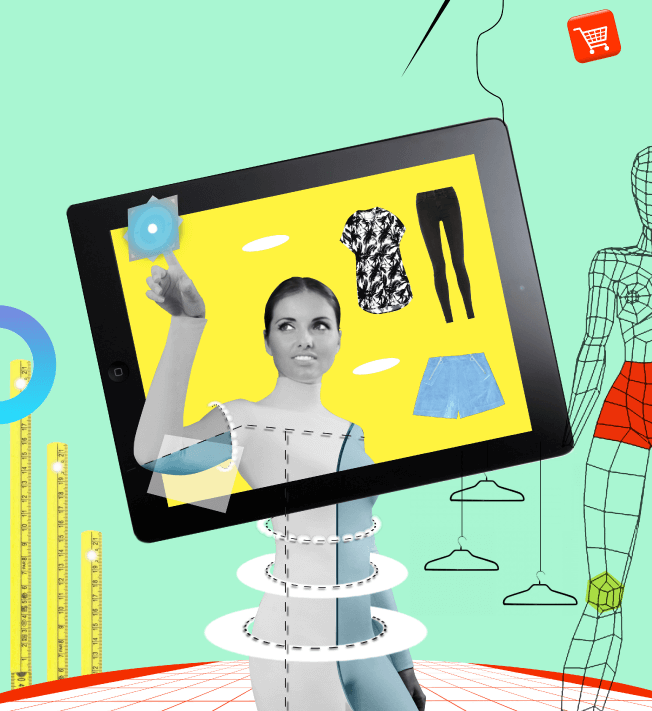A couple of years ago, the apparel industry was abuzz about Me-Ality, a tech startup from Nova Scotia, Canada, with a radical proposition: If 3-D digital scanning booths could size you up at airport security, then why couldn’t they measure you for the perfect-fitting pair of jeans?
Me-Ality’s large, hexagonal booths did, in fact, look a lot like the ones you’d find at Chicago O’Hare or LAX, only these devices were set up at retail locations. Inside, an electronic wand would make several rotations around a standing subject, using radio waves to collect 200,000 body measurements. The media ate up the technology, dubbing Me-Ality (pronounced like “reality”) a “miracle worker.” By 2011, the booths were set up in multiple Bloomingdale’s locations and more than 70 shopping malls.
While it seemed for a moment that this advancement might change clothes shopping forever, it didn’t quite work out that way. Last year, Me-Ality mothballed most of its machines, with former employees taking to the job board Indeed.com to tell of mass layoffs and faulty equipment. (Me-Ality did not respond to requests for comment for this story, while Bloomingdale’s media relations director Jamie Frankel said the company does not comment on its partners.)
What went wrong? If digital technology has redefined how we live, work, play, eat, shop and everything in between, then why can’t it help you find a blazer that fits?
As retail consultant Bob Grayson puts it, the scanner in 2011 might have looked like the future but now serves as an example of “the overreach of technology.” Grayson points out while a machine that can take thousands of body measurements might seem impressive, that does little good when apparel brands still make only 15 sizes of a given garment. “The leap from the detail that was available from the machines to the choices that were available in the store wasn’t a match,” he explains. “That was a flaw that we didn’t see at the time.”
Another problem was that many consumers—notably, women shopping for jeans—were simply not all that comfortable with the idea of a machine scanning their bodies, especially in a public place. Says Sarah Ahmed, creative director of jeans brand DL1961: “Denim shopping is one of the most daunting shopping experiences for women,” and the trouble with 3-D body mapping is that it’s a bit too much reality for many consumers. “It’s kind of silly, but people don’t really want to see [what they look like],” Ahmed notes. “They think they look a certain way, but when you see mapping, it’s … physicality. That’s the reason it won’t work for a brand like ours, even if those Me-Ality things worked in our favor.”
DL1961 has employed digital technology in a less-invasive iteration. During the holiday shopping season, the brand installed the Denim Doctor—a kiosk featuring a touchscreen computer whereby a shopper can select her body type and enter her measurements—at Nordstrom stores. The computer also asks the shopper about her lifestyle—the climate where she lives, whether the jeans will be worn for work or during leisure time. An algorithm then crunches all that data and displays various styles and cuts on a rotating, computer-generated figure. “The way to really sell denim is 360-degree shots and body mapping—without a woman stripping down to her underwear,” as Ahmed puts it.
Indeed, showing customers how clothes will look on their bodies without actually scanning their bodies is a more practical tool for retailers, says James Gambrell, CEO of U.K.-basedFits.me, whose clients include Hugo Boss and Thomas Pink. Fits.me offers apparel brands a range of online fitting-room solutions.




